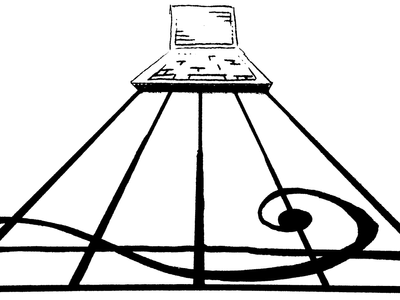Overview of music informatics, its history and applications as well as a review of basic principles, such as music representation, analog to digital conversion and Fourier transform.
Feature extraction that shows how music data can be described in different domains e.g. time, frequency and time-frequency.
How music content at different levels of abstraction can be expressed and compared with distinctive features.
Ways to model music data by means of statistical machine learning methods.
Evaluation of models of music data and their application in reality.
DT2470 Music Informatics 7.5 credits

Music is everywhere, but how might it be made as searchable as text? This course digs into the details of extracting information from music data. Such technology can be used to search and retrieve music (like Shazam), recommend music and create playlists (like Spotify), and identifying musical instruments, rhythm, chords, and so on. Come see how signal processing can combine with machine learning to create useful and fun applications. The course closely follows the text, Müller, Fundamentals of Music Processing: Audio, Analysis, Algorithms, Applications. Springer, 2015. Here is an outline of the lectures:
Lecture 01: Introduction
Lecture 02: Overview of signal processing, Fourier transform
Lecture 03: Overview of pattern recognition and machine learning, pt. 1
Lecture 04: Overview of pattern recognition and machine learning, pt. 2
Lecture 05: Music synchronisation
Lecture 06: Beat detection
Lecture 07: Tempo estimation and rhythm description
Lecture 08: Music structure
Lecture 09: Chord recognition
Lecture 10: Content-based retrieval
Lecture 11: Evaluation
Lecture 12: Advanced topic, e.g., Folk music modeling and generation
Information per course offering
Information for Autumn 2024 musinf20 programme students
- Course location
KTH Campus
- Duration
- 26 Aug 2024 - 27 Oct 2024
- Periods
- P1 (7.5 hp)
- Pace of study
50%
- Application code
50245
- Form of study
Normal Daytime
- Language of instruction
English
- Course memo
- Course memo is not published
- Number of places
Places are not limited
- Target group
Open to all master's programmes as long as it can be included in your programme (see also the course syllabus's eligibility requirements).
- Planned modular schedule
- [object Object]
- Schedule
- Part of programme
Master's Programme, Information and Network Engineering, åk 1, Recommended
Master's Programme, Information and Network Engineering, åk 2, Recommended
Master's Programme, Interactive Media Technology, åk 1, Conditionally Elective
Master's Programme, Interactive Media Technology, åk 2, Conditionally Elective
Master's Programme, Machine Learning, åk 1, Conditionally Elective
Master's Programme, Machine Learning, åk 2, Conditionally Elective
Contact
Course syllabus as PDF
Please note: all information from the Course syllabus is available on this page in an accessible format.
Course syllabus DT2470 (Spring 2023–)Content and learning outcomes
Course contents
Intended learning outcomes
After passing the course, the student shall be able to
- account for how feature extraction works and explain why it is needed
- recommend methods for comparing and modelling of music data
- design, implement and evaluate own methods for modelling of music data
in order to
- be able to describe how information at different levels of abstraction can be extracted from music data (acoustic as well as symbolic) and be used in many applications (e.g., search, retrieval, synthesis)
- be able to design algorithms for handling and modelling of music data as well as evaluate their performance.
Literature and preparations
Specific prerequisites
- Knowledge in probability theory and statistics, 6 higher education credits, equivalent to completed course SF1910-SF1925/SF1935.
- Knowledge and skills in programming, 6 credits, equivalent to completed course DD1310-DD1319/DD1321/DD1331/DD1337/DD100N/ID1018.
- Knowledge in algebra and geometry, 7.5 higher education credits, equivalent to completed course SF1624.
Equipment
Literature
Examination and completion
If the course is discontinued, students may request to be examined during the following two academic years.
Grading scale
Examination
- LAB2 - Laboratory work, 3.0 credits, grading scale: A, B, C, D, E, FX, F
- PRO2 - Project assignment, 3.0 credits, grading scale: A, B, C, D, E, FX, F
- UPP2 - Written report, 1.0 credits, grading scale: A, B, C, D, E, FX, F
- ÖVN2 - Exercises, 0.5 credits, grading scale: A, B, C, D, E, FX, F
Based on recommendation from KTH’s coordinator for disabilities, the examiner will decide how to adapt an examination for students with documented disability.
The examiner may apply another examination format when re-examining individual students.
Opportunity to complete the requirements via supplementary examination
Opportunity to raise an approved grade via renewed examination
Examiner
Ethical approach
- All members of a group are responsible for the group's work.
- In any assessment, every student shall honestly disclose any help received and sources used.
- In an oral assessment, every student shall be able to present and answer questions about the entire assignment and solution.
Further information
Course room in Canvas
Offered by
Main field of study
Education cycle
Add-on studies
Transitional regulations
The earlier examination LAB1 is replaced by LAB2, PRO1 is replaced by PRO2, and UPP1 is replaced by UPP2 with ÖVN2.
Supplementary information
In this course, the EECS code of honor applies, see:
http://www.kth.se/en/eecs/utbildning/hederskodex